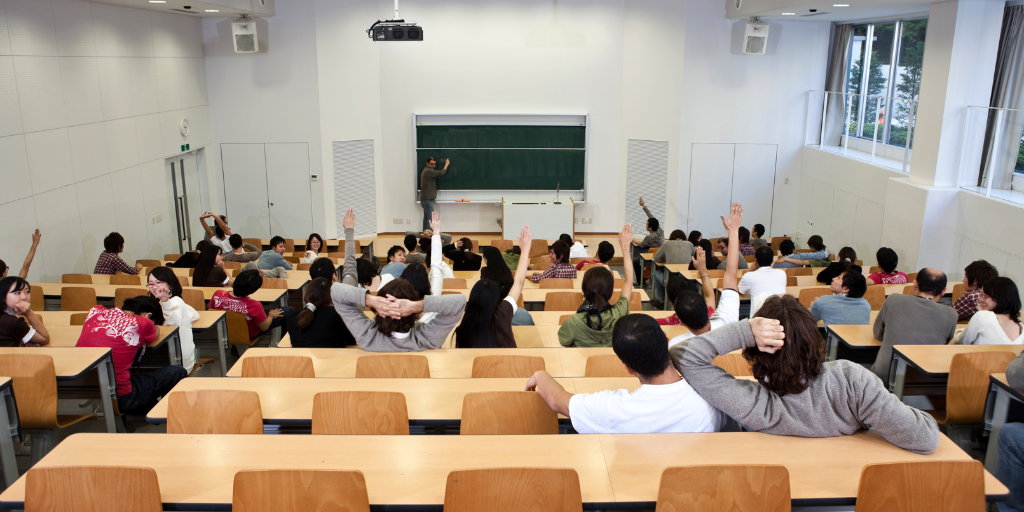CHALLENGE
The Parkland School Division, Cisco, and Compugen had previously launched a new partnership initiative with the opening of the Prescott School. The new facility would serve as a pilot program for incorporating technology into classroom learning.
Compugen implemented Cisco telepresence units that would equip classrooms with fully interactive conferencing capabilities, allowing students to connect to live learning sessions. Students in the most remote areas of rural Alberta could now be transported to Italian museums, the Globe Theatre in London, or even the Great Wall of China, through virtual video tours to participate in shared learning initiatives. The Prescott School became a model for the effective use of classroom technology to enrich the learning experience for students.
When schools were locked down across the province, suddenly Parkland had to find a way to ensure all students could take part in remote learning. Parkland had made technology the central tool for everyday school life. Students were supplied school-owned Chromebooks to use while on-premises, which would let students download assignments from the classroom portal and upload the finished product.
For a lot of the students who lived in the more remote areas of the school division, the school provided them with their only access to laptops and the internet. Forced to stay home, their ability to continue with this technology-integrated educational experience was seriously threatened.
While there were many who could continue with virtual classes from home, the community and education leaders knew that any solution that worked for some but not others was no solution at all. They would need to find a way to ensure every student in the district could continue their learning without needing to set foot inside the walls of the school.
SOLUTION
A mayoral committee was formed involving the three major communities within the school division – Spruce Grove, Stoney Plain, and Parkland County – to come up with a solution that would allow all students to continue to participate in class however it was being conducted. Since they could not bring WiFi to the students, they came up with a plan to allow students to access the school WiFi without having to go into the schools.
“They became very creative in taking the network from inside the walls and extending it to the parking areas around each school,” explained Mark Karaki, Technology Services Director at the Parkland School Division. “Compugen supported the initiative employing Cisco technology and architecture while always keeping the connectivity challenge for students and parents at the forefront.” This would allow students to connect from the parking lot and do their schoolwork while still following provincial guidelines.
To successfully execute this plan, approximately $2 million in network infrastructure upgrades would need to be made across the school division in 2020 and 2021. This upgrade utilized all Cisco switches, WiFi access points, and related software.
This enabled them to take the next step of connecting to the Next Generation interfaces at speeds of one to 10 Gigabits per second. According to Karaki, network speed had been an issue in the months leading up to the shift to remote learning.
“We had a large number of devices on our networks and the old system just couldn't handle the volume of traffic. I remember when an iOS update came out and all the students and staff did their updates at the school which slowed everything down to a near halt,” he recalled. After the comprehensive upgrades to the switches and WiFi access points, network speeds and division-wide access to crucial software updates were no longer an issue.
OUTCOME
Nicole Lakusta, Parkland’s Curriculum Educational Technology Facilitator saw firsthand the immediate impact the new system had.
“We're a Google workplace environment, all of the students are in Google Classroom, so network access is critically important. With the upgrade, our students could come and sit in the parking lot and do their schoolwork. If this wasn’t feasible, they could come and connect to WiFi to download their assignments, work on them at home and come back to upload it wirelessly,” she said. The solution improved overall access to connections that the students wouldn’t have. This meant that they could stay on top of their schoolwork, regardless of whether they had an available connection at home or not.
Lakusta pointed out that the new enhanced network access was not exclusive to Parkland School Division students. Students from neighbouring communities who needed an Internet connection could access it for free, as could parents within the area. For many parents and community members who were struggling with network access in the new work-from-home reality, this network proved to be a daily lifeline not just to their students but to the rest of the neighbouring community. This was a vital public service welcomed by the wider community as they were able to take advantage if their own connectivity resources were scarce.
Most importantly, the upgraded network made it possible for teachers to continue delivering education through a very difficult period.
“Because we upgraded the infrastructure, teachers were able to still come to the classroom where they had access to all in-class teaching tools and deliver virtual classroom instruction from within,” Lakusta said. “We also noticed that parents and grandparents were getting involved in a way we had never seen before, and it enriched the experience even more.”
CONCLUSION
Tasked with bridging the technology gap in the wake of the pandemic-related shutdown, the Parkland School Division, Cisco, and Compugen worked together to upgrade the school network and maintain students’ access to education. By extending their WiFi connection outside of the four walls of the school, Parkland allowed students and community members alike to continue daily learning and work tasks when home Internet access was not available. This also enabled teachers to work out of the classroom which eased the students’ transition to remote learning, giving them a familiar visual environment – with the teacher in the front.






.png)